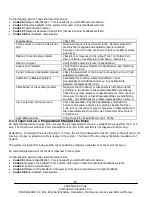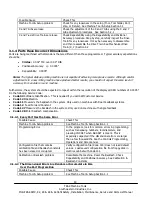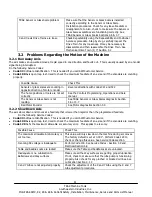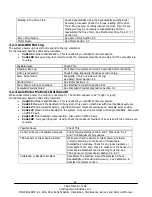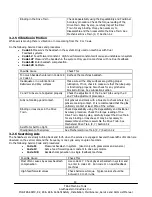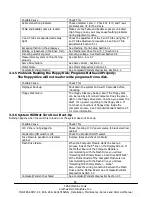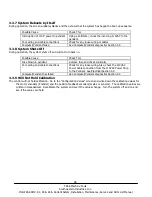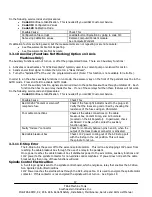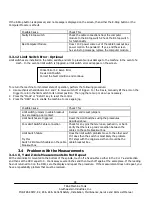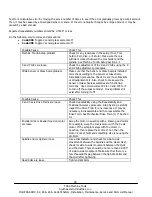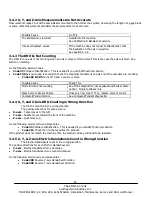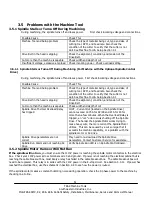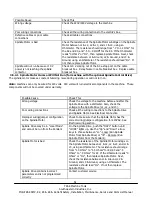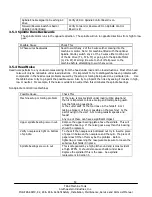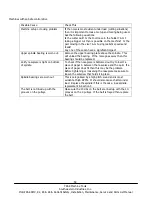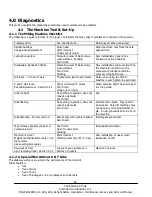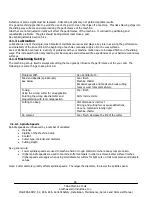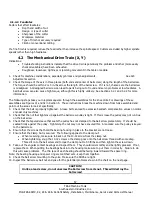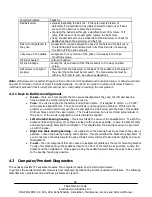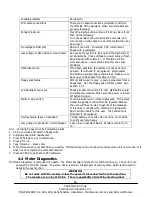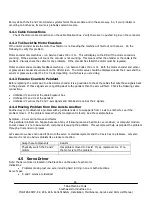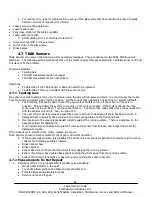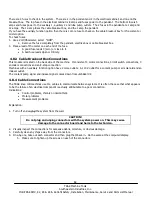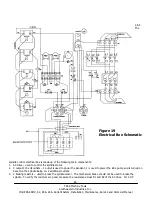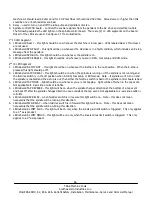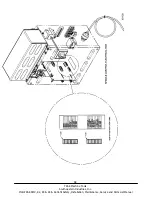
53
TRAK Machine Tools
Southwestern Industries, Inc.
ProtoTRAK SMX, K2, K3 & K4 & Retrofit Safety, Installation, Maintenance, Service and Parts List Manual
Spindle Enable Signal not reaching AC
Drive
Verify LED on Spindle Control Board is on.
Forward/Reverse Switch is bad or
Spindle Control Board
Verify Forward or Reverse LED on Spindle Control
Board is lit.
3.5.3 Spindle Runs Backwards
The spindle motor runs in the opposite direction. The spindle will run in opposite directions from high to low
gear.
Possible Cause
Check This
3-Phase wires backwards
Need to switch any 2 of the 3 wires either coming into the
machine or motor. Note: For machine fitted with the optional
Spindle Control, switch any 2 of the 3 wires either coming out
of the AC Drive (T1, T2 & T3) or going into the Spindle Motor
(U, V & W). Warning: Be sure to shut off all power to the
machine before attempting to switch any wires.
3.5.4 Head Noise
Head noise pertains to any unusual noises coming from the head under load and no load situations. Most often head
noise will only be noticeable under load situations. It is important to try to distinguish between problems with
components in the head versus problems caused by the setup or tooling being used on a particular job.
Use
the table below to try to pinpoint the possible cause. Also try to pinpoint the noise by seeing if it exists in high,
low or neutral. For example, if the noise is evident in neutral then this eliminates the spindle bearings.
Non Spindle Control Drive Machines
Possible Cause
Check This
Machine setup or tooling problem
If the noise is most evident under load (cutting situations)
then it is important to look at setup and tooling being used.
Ask the following questions.
Is the cutter dull? Is the tool loose in the holder? Am I
taking a bigger cut then is possible on the machine? Is the
part moving in the vice? Am I using realistic speeds and
feeds?
Any one of these can have a significant impact.
Upper spindle bearing is worn out.
Remove the upper bearing plate above the spindle. This will
unload the bearing. If the noise goes away then this bearing
should be replaced.
Verify nosepiece is tight on bottom
of spindle.
To check if the nosepiece is bottomed out try to insert a piece
of paper in between the nosepiece and the quill. If a piece of
paper does fit then this may be the problem. Before
tightening or loosening the nosepiece make sure to loosen the
setscrew that holds it in place.
Spindle bearings are worn out
This is categorized by a high pitch sound and is most evident
at high RPM’s. It should also cause chatter under load.
Replace the spindle if this is the case. See spindle
replacement in Section 5.

